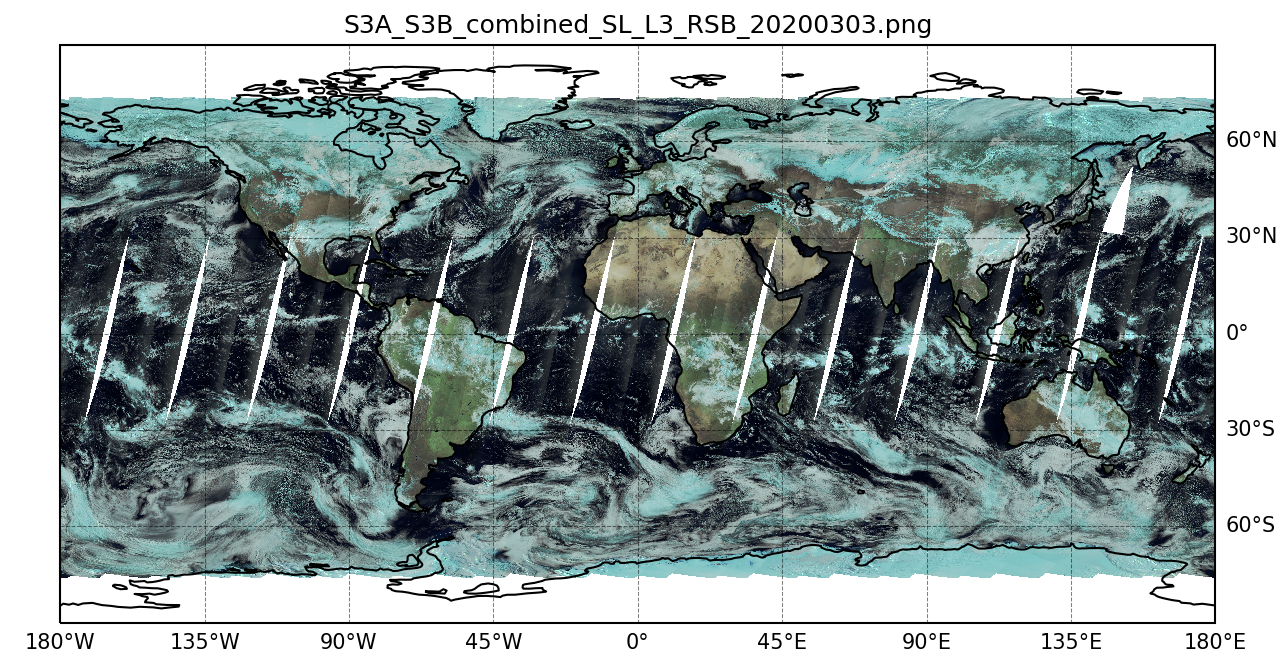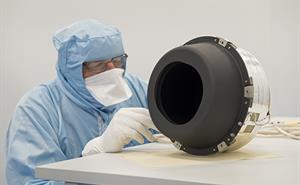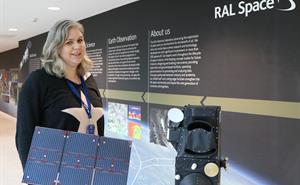Her role is to provide expert support for the SLSTR instrument as well as undertaking independent research projects on cirrus clouds and the retrieval of sea surface temperatures. Caroline writes about how the SLSTR team work to make sure that the data we get from Earth observation satellites is accurate. Find out more about Caroline's work and career on her profile.
The Sea and Land Surface Temperature Radiometer (SLSTR) is part of ESA's Sentinel- 3 missions. The Sentinel missions are there to 'keep watch' over the Earth, and SLSTR helps in this by measuring and monitoring the surface temperature of the planet – vital tasks for understanding climate change and for weather forecasting. There are two SLSTR instruments in orbit currently, and together they are able to cover almost all the globe in a day. SLSTR makes measurements of both visible light and infrared (heat). The infrared is used to derive surface temperatures, and the visible is used to help detect the clouds that obscure the surface and to retrieve aerosol and cloud properties.

Much work goes into designing, building, testing, software engineering and calibrating a satellite instrument, and in fact, the on-ground calibration of SLSTR took place here at RAL Space.
The instrument hardware is handled with great precision in clean rooms, until, finally, it is placed on a rocket and thrust skywards with awesome acceleration. We expect that our instrument will survive this journey of course, but will its measurements be affected in any way? Given that SLSTR has such an important role in looking out for the Earth, our job in the team at RAL is to look out for the instrument and make sure it keeps doing its work properly.
We are part of the Sentinel-3 Expert Support Team that carries out this task. We monitor instrument level parameters, for example temperatures, mechanism jitter, and performance of the detectors, as well the actual calibrated radiances that will be transformed into the surface temperatures. We also suggest improvements that can be made to the way the satellite data are processed.
 The SLSTR detectors that are sensitive to infrared light need to be cooled in order to make accurate measurements. One of our most important roles is to check that the instrument is cool enough, and that the on-board calibration reference sources (two Black Bodies held at fixed temperatures) are working properly so that SLSTR continues to produce good data.
The SLSTR detectors that are sensitive to infrared light need to be cooled in order to make accurate measurements. One of our most important roles is to check that the instrument is cool enough, and that the on-board calibration reference sources (two Black Bodies held at fixed temperatures) are working properly so that SLSTR continues to produce good data.
The instrument also has several moving parts that must operate smoothly to produce reliable images. Unlike a digital camera, which captures an entire scene onto an array of detectors, SLSTR has a scanning mirror that rotates and sweeps only a few pixels at a time across the Earth – each scan takes 0.3 seconds. The individual scans are then put together to form a complete image of the scene. We check that the scanner is moving correctly and that each pixel can be accurately geo-referenced to coordinates on the ground by looking at the instrument data sent back to Earth.
We also use the Earth a little bit like a laboratory. To check the accuracy of the radiance measurements, we use targets such as deserts that are very uniform, to compare what SLSTR measures with similar instruments on other satellites. We can also make use of gas flares from oil and gas plants, which provide a bright uniform target to help us check the positioning of the image pixels.
It is satisfying working on a project like this as the data produced is useful to so many applications, and is especially relevant to addressing the challenge of climate change.

Images
Top: A combined global image produced from all of the visible measurements made by the SLSTR instruments on board the Sentinel-3A and Sentinel-3B satellites during the daytime on 3rd March 2020.
Middle: Black Body Cavities for Sentinel-3's SLSTR instrument. Credit: STFC RAL Space
Bottom: Caroline Cox alongside a model of Sentinel-3. Credit: STFC RAL Space
